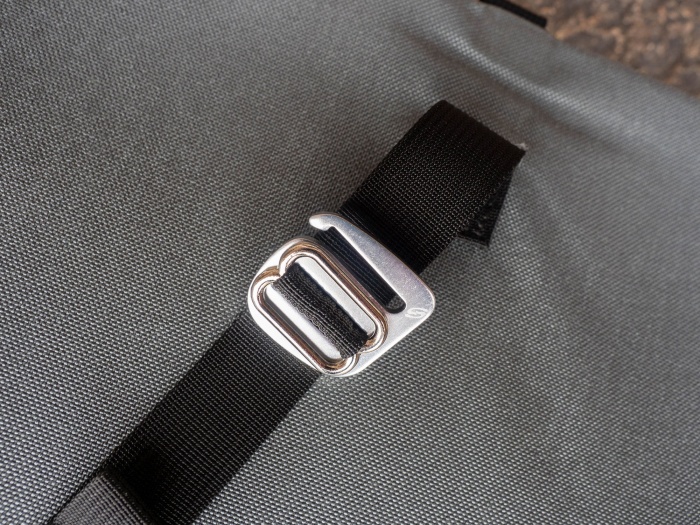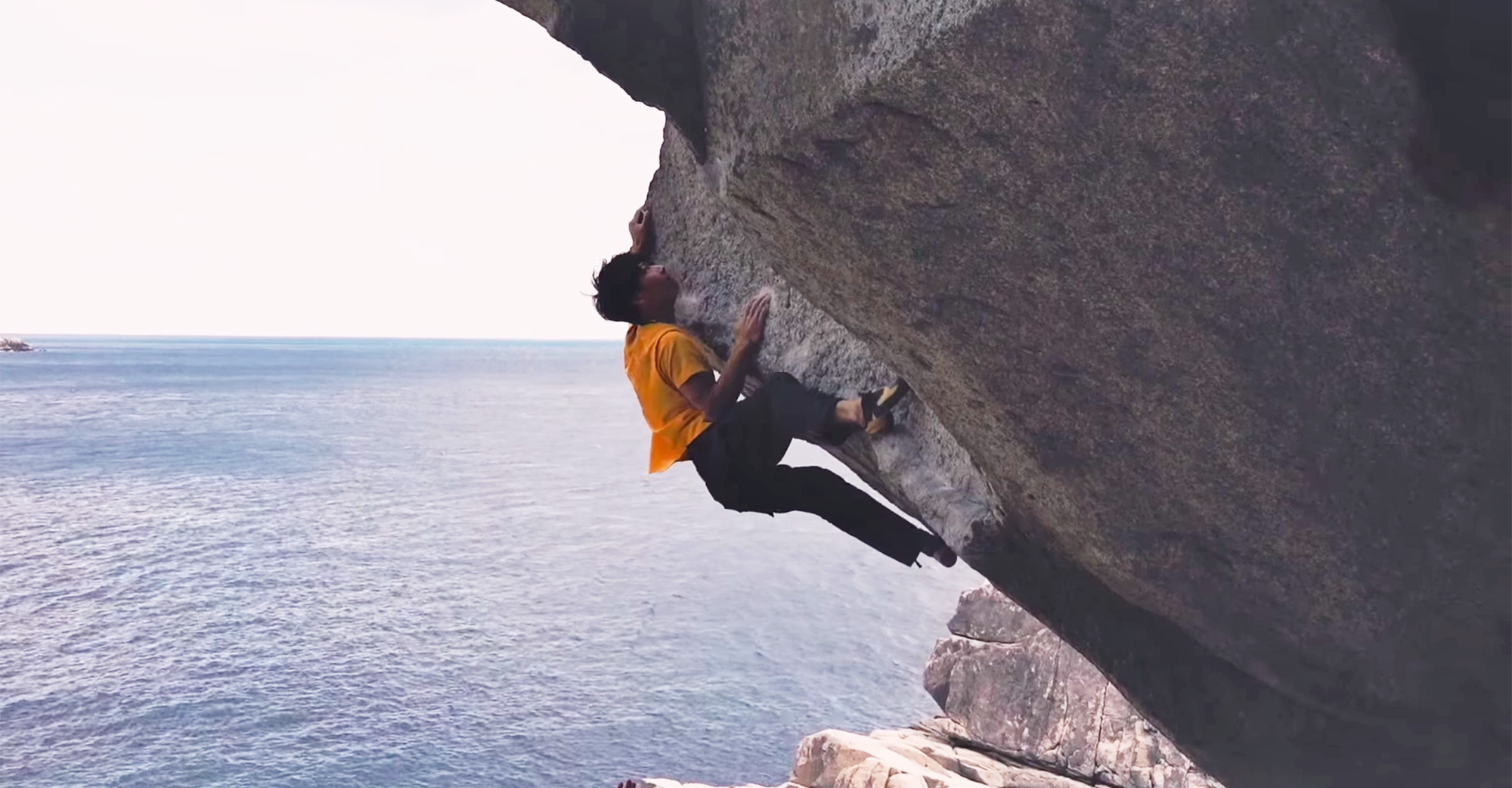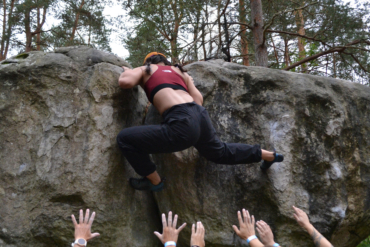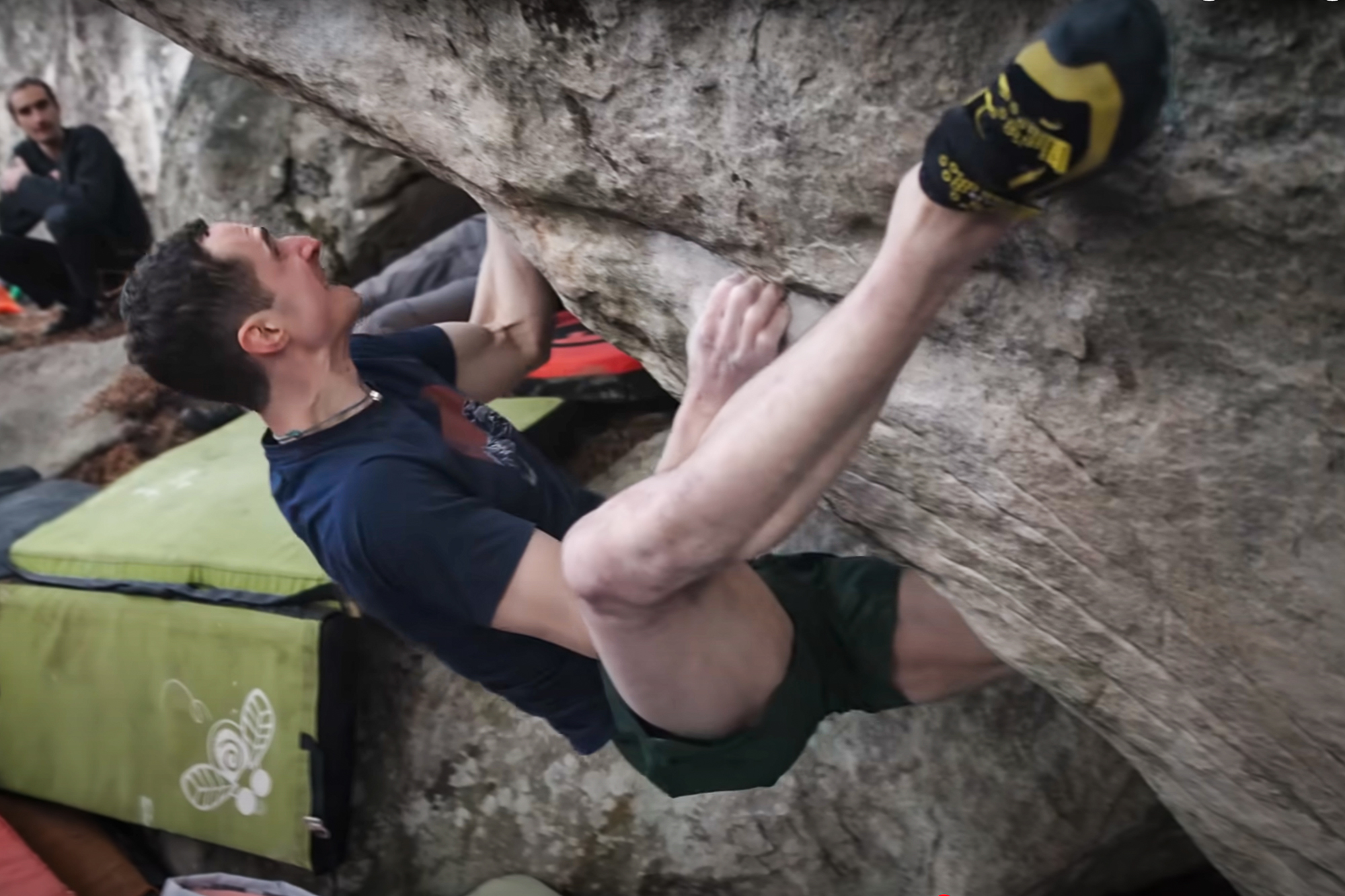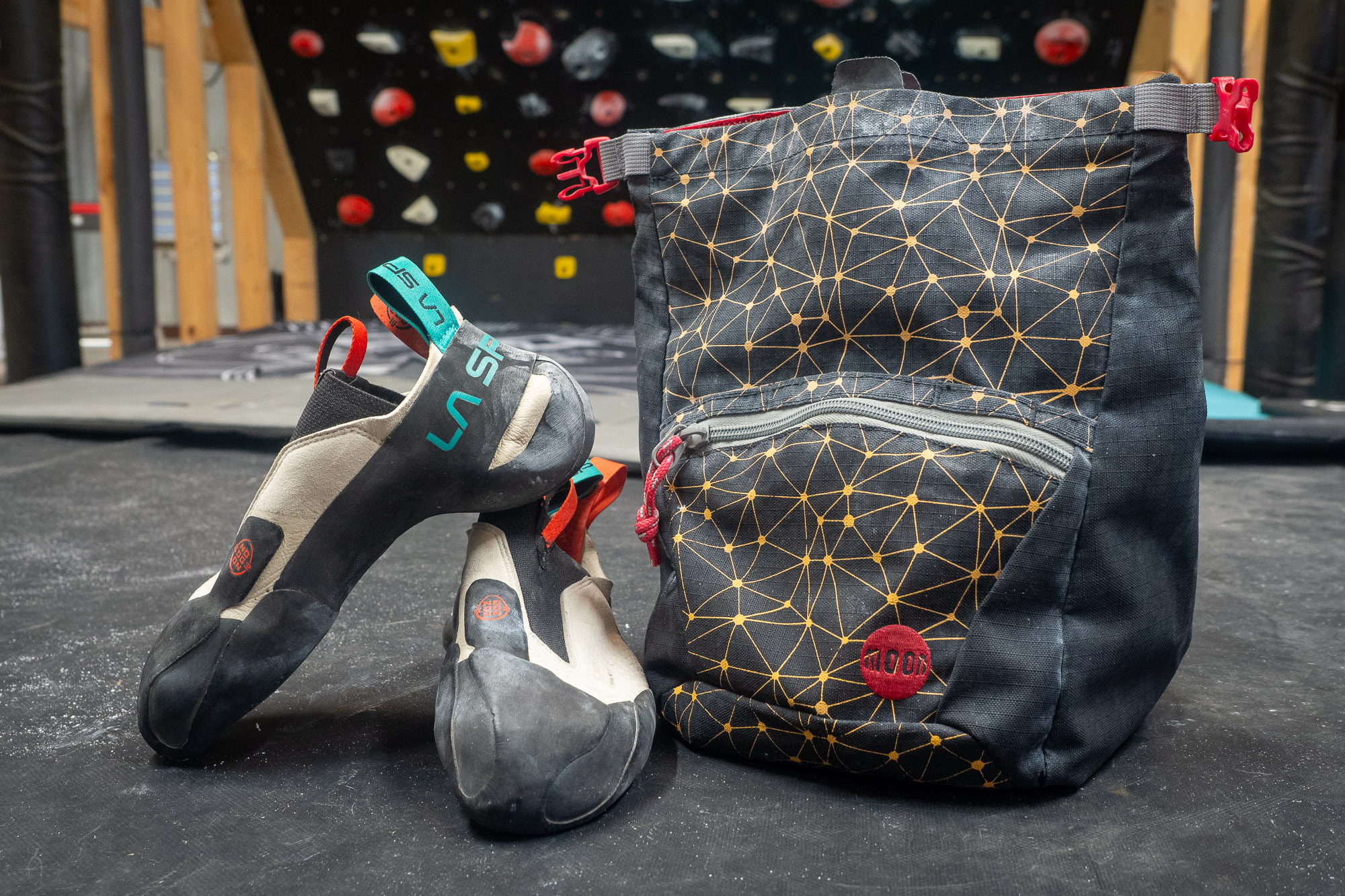From dirt to granite, the 3×4 allowed for safe and reliable falls up to 10 feet.
Located next to the premier bouldering destination of Hueco Tanks, Send Climbing is about to break into the bouldering crash pad market. Its designs differentiate from classic pads, and the brand’s location allows for quick and frequent testing.
The 3×4 Pro Crash Pad, available in early 2018, handles falls well and integrates a lot of nuanced bouldering pad tech. We’ve been testing a pre-production sample of this pad for two months.
Send Climbing is known best for its kneebar pads. The neoprene and sticky rubber pads have been the weapon of choice for attacking kneebars for more than 15 years, including use by Adam Ondra on “Silence,” the world’s first 5.15d.
In short: The Send Climbing 3×4 Pro Crash Pad’s unique DistribuFrame and foam layup provide a safe and predictable landing zone for anything other than highball problems. Cutting-edge designs bring additional safety and improve carrying efficiency, and the pad is extremely durable.
Energy Absorption: DistribuFrame in Pro
A crash pad’s primary function is to reduce the impact of falling from boulder problems. Send Climbing addresses energy absorption and distribution through a different foam layup than other bouldering pads.
The uppermost layer is half-inch-thick closed-cell foam, continuous across the entire pad. A corrugated sheet of plastic lies underneath, called the “DistribuFrame.” This semi-rigid sheet spreads and slows down impact. This force then disperses to 3 inches of high-compression polyurethane foam below.
The corrugated plastic sheet also provides a predictable landing feel. The initial impact is not as soft as other pads, but the reaction of the crash pad is consistent and gives a stable feeling, particularly to the ankles.
The impact reduction system allows a thinner pad thickness (3.75 inches) and lower weight than similar pads, while still absorbing impacts without bottoming out underfoot.
3×4 Pro Crash Pad Suspension System
 While most crash pads’ suspension systems are attached to the outer fabric only, the DistribuFrame also provides an anchoring point for the suspension components.
While most crash pads’ suspension systems are attached to the outer fabric only, the DistribuFrame also provides an anchoring point for the suspension components.
Send Climbing’s suspension attaches through the open-cell foam and secures to the corrugated plastic sheet. This anchoring system gives the suspension a solid feel, with less sagging and unwanted movement compared to suspension anchored to the fabric shell.
It also prevents the shoulder strap or hip belt tearing away from the back panel – a common failure point found in pads.
Climbers can adjust the top attachment point of the shoulder straps in one of two vertical positions via Velcro flaps. The contoured shoulder straps have adjustable load lifters and an adjustable elastic sternum strap, and the hip belt has adjustable load stabilizers. Ample foam padding graces the shoulder straps and hip belt.
PadLink, Add-A-Pad, Non-Taco Solution
Hinges in “non-taco” pads can be risky to fall on; pads can fold up or bottom out at these junctures. The 3×4 Custom Crash Pad’s hybrid hinges have the half-inch closed-cell foam bridging them, making dangerous landings in these zones less likely.
The pad has six “PadLink” webbing loops around its perimeter. These facilitate tethering Send pads together to keep them from sliding apart, preventing a main source of injury when using multiple pads. These PadLink loops also allow anchoring the pads to other structures (with webbing, accessory cords, and climbing protection) to prevent them from shifting on angled landings or in high winds.
Send Climbing’s “Add-A-Pad” system allows attaching an extra 2-by-3 pad ($99) via a quadruple Velcro system to create a larger 3-by-6 landing zone. This additional pad creates a tri-fold crash pad the size of a twin bed that also acts as a self-supporting couch.
The padded closure flap is large enough to carry two more pads, and the inside surface is lined with automotive carpet for cleaning off shoes before climbing.
Materials, Specifications: Send Climbing Pad
The outer shell of the Send Climbing 3×4 Pro-Adjustable Crash Pad is 1,000d Cordura; several panel coloring combinations exist, with custom options available for an extra charge.
An external layer of webbing reinforces all corners, protecting these wear points from abrasion. The bottom of the pad is seamless, reducing abrasion and failure points. All buckles are Send Climbing’s crushproof metal “CinchLocks” carried over from their kneebar pads.
There are carrying handles on all sides and above the shoulder harness made of recycled climbing rope.
Send Climbing 3x4 Pad Specs
- Material: 1,000d Cordura
- Foam: 0.5″ closed-cell foam, 3″ open-cell foam
- Unfolded dimensions: 36″ x 48″ x 3.75″
- Verified weight: 12 lbs., 10 oz.
- Cost: $280
The Send Climbing 3×4 Pro Adjustable Crash Pad In Use
The 3×4 Custom Crash Pad went into heavy rotation with large groups at the start of bouldering season. Between rounds at Hueco Tanks, and granite and limestone bouldering areas, I put a high volume of use into the pad in a short amount of time.
The solid suspension system was immediately noticed, as I felt the entire pad connected to my back and not just the outer shell. I loaded a day pack with bouldering essentials under the flap. The entire package carried well; 20 additional pounds of gear created no issues.
The suspension anchoring system and components worked together to create an efficient carrying system compared to other pads.
Jumping off boulders from a height of 10 feet caused no worries. The landing was predictable, and I never felt like my heels sunk into a hole. The DistribuFrame gave a firm but a flexible platform that kept my feet relatively level, reducing the probability of ankles rolling.
Popping off unexpectedly onto my side or back gave a firmer landing than other pads I have used, but nothing jarring. But I never felt anywhere near bottoming out. When boulders got taller than 12 feet, I preferred stacking pads or using pads better suited for highball problems.
I used webbing loops to anchor to boulders on a steeply pitched landing, which reduced fears of the pad skating out from underneath me. It also eliminated the need to keep repositioning the pad.
Wear Without Tear: Final Pad Impressions
The pad has suffered through abusive use on highly abrasive stone. And other than surface dirt, the pad shows zero signs of wear. The foam has broken in somewhat, becoming slightly more pliant, but the system remains firm and resistant to bottoming out.
The Send Climbing 3×4 Pro Crash Pad costs $280, more than competing pads of the same size, but the added safety of the DistribuFrame system, better carry of the suspension system, and durability command serious consideration.







